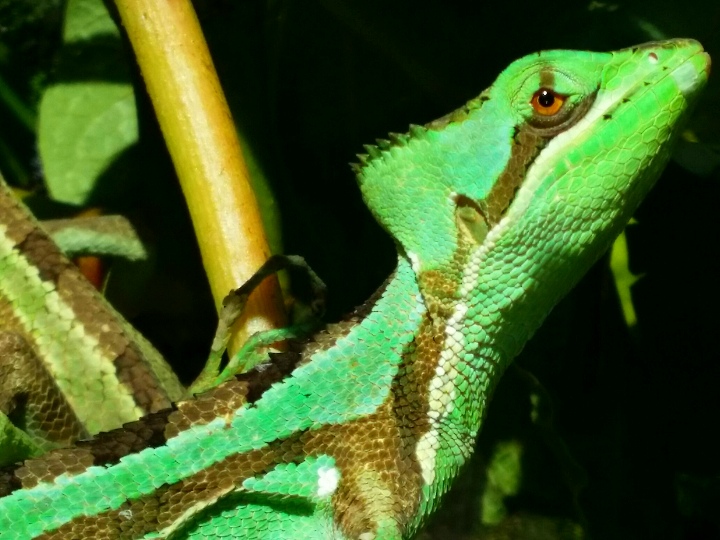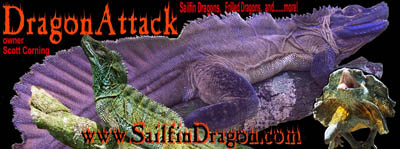C.B. Baby Serrated Conehead Lizards (Laemanctus serratus) aka Casquehead Iguana $350ea plus overnight shipping
Hatched October 3, 2013
The first U.S. Breeding here at DragonAttack!!!

These beautiful lizards inhabit the forests from southern Mexico down towards the northern tip of Honduras. They get their name due to the serrated spikey scales that lay on the edge of their crown on their heads and also have a slight dorsal crest composed of these spikey scales as well, you will not see these characteristics on Laemanctus longpipes the other species of Conehead Lizard, the Serrated Coneheads also achieve an overall larger size reaching typically 26"-28"
Living an arboreal lifestyle, these peaceful lizards use their extremely long tails(3/4 of their total length)for careful balance as they gracefully move about up off the jungle floor, only coming down for an insect that has been spotted or for a chance at breeding activity. As you would expect, they blend in very well with their arboreal surroundings and exhibit beautiful greens, teals, light blues, and brown stripes down along their flanks, depending on temperatures and moods.
Caring the for Serrated Coneheads is relatively easy with the proper setup. Temps ranging from 80-90F in the daytime with a basking area for each lizard around 110Fand anywhere from 70-75F at night. They require frequent mistings, especially babies and juveniles. Adults are sprayed 2 to 3 times per day, babies get misted and set up on drippers as well. The use of foggers and misters would ease any issues if the keeper is not around very often. These lizards love insects so a variety is always recommended, well dusted and gut loaded insects is of utmost importance. Crickets being a big favorite, softer roaches, the occasional superworms especially if you can hang a bowl up in the foliage up off the ground. Caterpillars such as hornworms and silkworms, soldier fly larvae, the list goes on........also maybe once a week experiment with soft ripe colorful fruits ie mango, strawberries, bananas, papaya, blackberries, grapes, and hibiscus flowers. Its worth a shot, I've had the occasional bites taken out, but also place these items in a bowl up off the ground. I use ZooMed 10.0 bulbs and 50w Halogen Indoor/Outdoor floodlights for the basking spots.
For Caging you can use either a large reptarium or screen enclosure for adults, preferrably the bigger the better or a custom planted enclosure that is box style with a front viewing area and vented. Potted plants are fine, ficus make great climbing plants that are easy to find at your local nursery, make sure they are free from pesticides and fertilizers. Non-toxic vines, real or fake and horizontal and vertical branches of varying diameters preferrably on the thinner side, using their belly girths as a good guide. The lizards tend to get along well with each other as long as its well planted and there's plenty of places to bask and retreat if necessary. For example a trio of adults in something like a 4x2x4 chameleon type enclosure would be adequate. |

